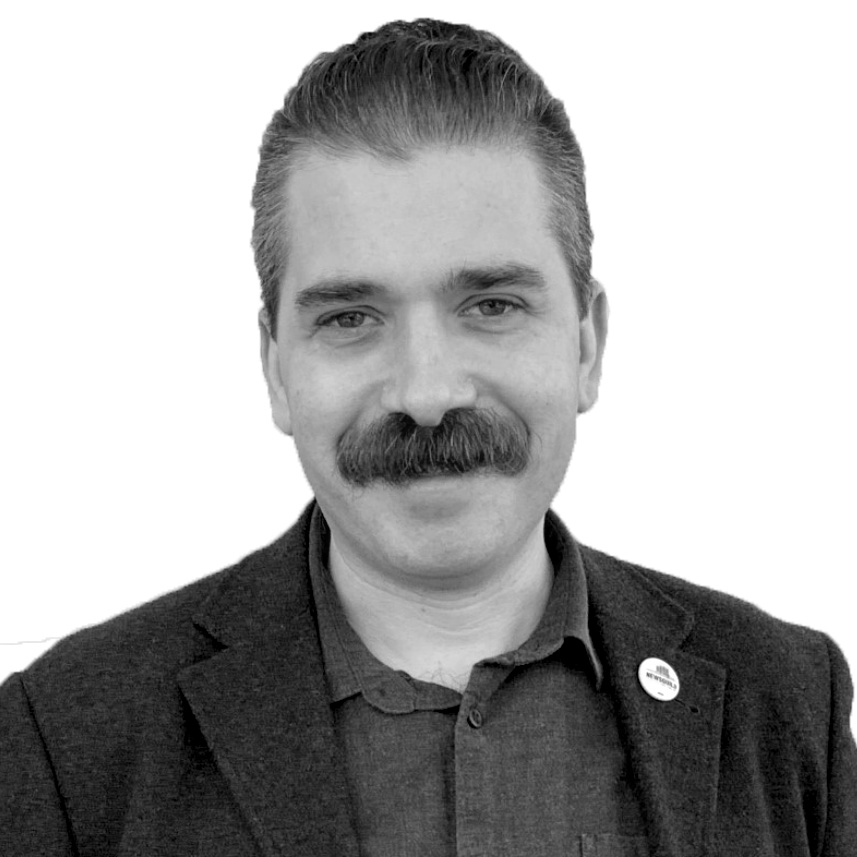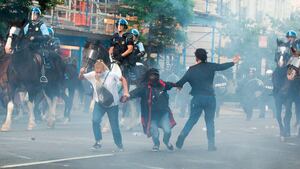As President Trump walked through Lafayette Park shortly after police, backed by National Guardsmen, used tear gas and rubber bullets on peaceful protesters, there was a man in uniform accompanying him. He was not just any man and he wore not just any uniform.
He was Army Gen. Mark Milley, the chairman of the Joint Chiefs of Staff, the senior-most officer in the U.S. military. He was not wearing his dress service uniform, but instead the camouflage of his combat uniform, as if to underscore that American streets where protesters are angrily demanding an end to institutional police racism are now the “battlespace” that Defense Secretary Mark Esper described.
It’s nowhere near the first time that Milley and other senior officers have worn their combat uniforms in stateside settings, reflecting in part how a generation-long conflict has blurred the lines between peace and war.
But regardless of what Milley’s choice of uniform represented, his appearance beside Trump—who is encouraging a violent response to the protests and threatened to use the active-duty military to suppress them—prompted retired officers and others close to the military to call Milley complicit.
“General Milley knowingly, willingly betrayed his oath yesterday. Milley chose to be a camouflaged puppet in support of the president’s authoritarian theatrics in front of St. John’s,” said ret. Army Col. Paul Yingling, who was H.R. McMaster’s deputy commander in the 3rd Armored Cavalry Regiment. Yingling wrote a famous 2007 article calling out the officer corps for its “Failure in Generalship” that consigned the military to the agony of the Iraq occupation.
“Milley should have resigned rather than participate in yesterday’s fascist political stunt,” he told The Daily Beast.
“Milley's accompanying the president can be seen as direct support for Trump's political agenda, undermining his position as chairman,” added Stanley Sloan, a nonresident senior fellow at the Atlantic Council’s Transatlantic Security Initiative. “Wearing his combat uniform suggests that he was taking responsibility for the military presence that cleared demonstrators from the park. He was ‘in command’ of the operation. This doubles down on the mistake of tagging along with the president.”
Milley’s office did not respond to a request for comment.
The University of North Carolina’s Richard Kohn, a prominent scholar of civilian-military relations, said Milley’s presence in the park sent a message of “intimidation” to protesters, but he didn’t know that “Gen. Milley had much of a choice.” Trump was using Milley “as a prop,” Kohn said, “the same way he used the church and the Bible as a prop to try to breathe fire and aggressiveness, and compensate for his own weakness in leadership.”
Kohn said he hoped “Gen. Milley has the strength of character and the good sense, if the president demands the use of the regular military, that the general would convince the president and the Pentagon to go through the normal processes of trying to use the National Guard first, by federalizing elements of it that they want to use in various places.”
Still, the use of the National Guard is raising questions about how violent and how militarized the police-led crackdown on the anti-racist protests is becoming. During a scary night in Washington, a D.C. National Guard helicopter, normally used for medical evacuations, performed a low-flight “rotor wash” operation to intimidate protesters. Senior defense officials on Tuesday also insisted that the Guard neither opened fire on Lafayette Park protesters nor was capable of doing so, as Guardsmen are typically armed with nightsticks, shields and masks, though some had pepper spray.
“It’s not a good, fun mission,” a Pentagon official said. “Nobody likes breaking up a fight.”
Kohn did not believe a full-blown crisis in civilian-military relations had manifested yet, though he said a “civilian-military relations” foul had. “If you have significant bloodshed on the hands of the military, be it active-duty, National Guard, military police or military law-enforcement units, it’s going to widen what’s already a troubling gap between the American military and the American people,” Kohn said. “How much was the National Guard trusted after Kent State?”
Sloan, whose expertise concerns NATO, said the military’s complicity in Trump’s crackdown sent a dangerous message to U.S. military partners abroad.
"Our NATO allies have long admired and respected the American military and its apolitical role in the U.S. government system,” he said. “Today, as the military seems to be supporting the president's political agenda rather than the U.S. constitution, this position is clearly being undermined in the eyes of NATO militaries, governments and publics."
Yingling, who said there was “no honorable way” to serve in the Trump administration, recalled meeting Milley in 2005, when the chairman was a brigade commander in Iraq. He struck Yingling as smart and courageous. “Like so many of his predecessors,” Yingling said, “he has lost both qualities when he, and we, needed them most.”







